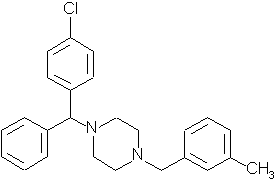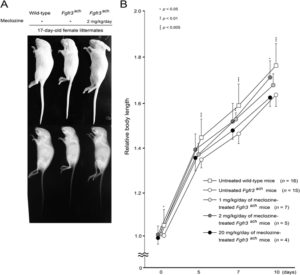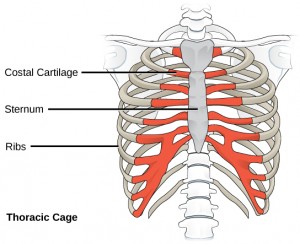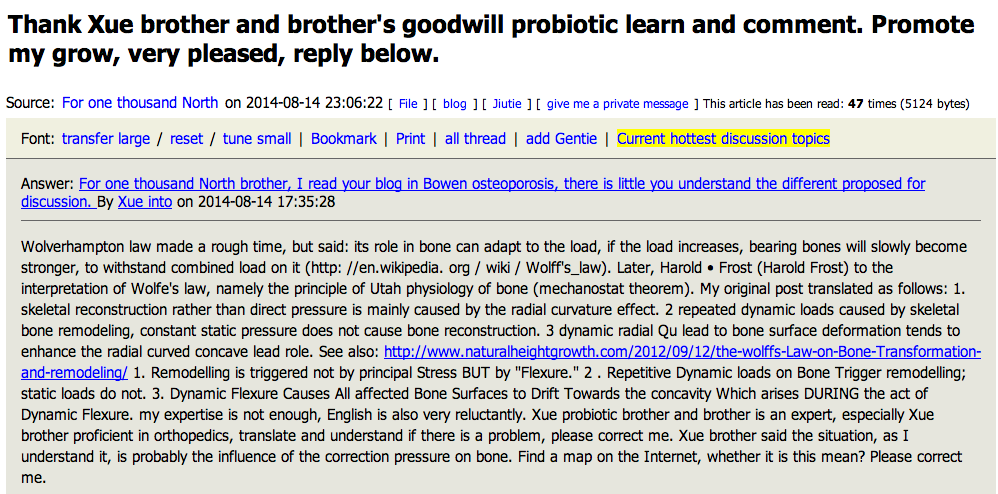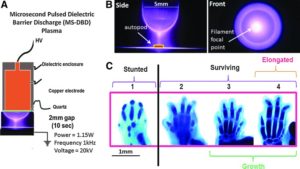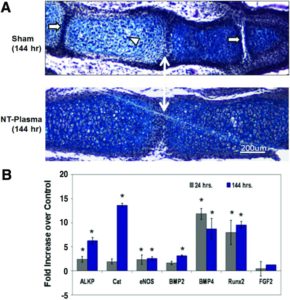Magnetic MAGEC Spine Lengthening Metal Rod Device For Noninvasive Scoliosis Treatment
 It seems that the technology for bone lengthening is finally starting to expand further. Where before it was just the long bones like the femur, tibia, and humerus, the same type of technically is being applied to the irregular bones of the torso aka the vertebrate bones. We became aware of this unique form of bone lengthening after finding at least two sources where this new type of bone growth was talked about.
It seems that the technology for bone lengthening is finally starting to expand further. Where before it was just the long bones like the femur, tibia, and humerus, the same type of technically is being applied to the irregular bones of the torso aka the vertebrate bones. We became aware of this unique form of bone lengthening after finding at least two sources where this new type of bone growth was talked about.
- EXCLUSIVE: Boy, 6, with scoliosis is first in New York area to get magnetic spine lengthening treatment
- Boy, 11, grows six inches in height after surgeons inserted MAGNETS into his twisted spine to stretch it out
It may seem like a stretch for the 2nd source to say that a boy grew 6 full inches from using magnets to stretch out his curved spine but the pictures seems to show that he did indeed get just that. We remember reading about a similar story about another boy last year who got a similar type of treatment. Magnet implants were placed into his leg bones to stretch out the bones from using E&M fields which were applied noninvasively.
Now, there is this technology. It turns out that the MAGEC Spine Lengthening device is a type of magnetic rod inserted into the spine and then slowly lengthened from passing some level of magnetic force to the rods, stretching the rods out.
The First Story – It was published just a few days ago in August of 2014. An orthopedic surgeon named Dr. Michael Vitale says the technology is ‘a game-changer. The 6 year old boy getting the surgery is a Jeremiah Knowlton from Allendale, NJ. Quoted from the article…
“To correct his scoliosis, Jeremiah first had surgery in April to implant an adjustable rod in his spine. In that surgery alone, Vitale was able to reduce his spine curvature from 72 degrees to about 20 degrees — a 50-degree correction, when only 30 degrees were expected….At last week’s first lengthening procedure Vitale took the hand-held MAGEC device and glided it over Jeremiah’s back so it synced with the rod and could pull it 5 millimeters. It took just a few minutes. Jeremiah will have the noninvasive procedure — which is done to keep up with normal spine growth and maintain the curve correction — every three months until he’s a teen”
It seems that it wasn’t until Feb of this year that the MAGEC device was approved by the FDA, but had already been used in 24 countries and helped so far around 750 children with scoliosis problems.
The Second Story – This was published around April of this year (2014) about this boy named Thaine Marston. His parents found out about the therapy called the Magnetic Expansion Control treatment. Over a span of 18 months, the device increased his height by 6 full inches. As explained by the article…
“MAGEC works by inserting an adjustable magnetic growing rod into the patient’s spine which can then be controlled by an external remote control….The rod is then lengthened by magnets outside the body which communicate with the magnets under his skin gradually straightening the spine“
The original doctor was a Consultant paediatric spinal surgeon Masood Shafafy.
The entire operation took a full 5 hours, but the hospital stay was around 6 days. After that, the patient/Thaine was back on his feet. He would eventually go from 4′ 9″ to 5′ 3″. As Thaine continues to grow, surgeons can continue to straighten his spine. All they have to do is put an external magnet to his back and slowly stretch out the magnet. However, to lengthen the magnets, you have to go back to the hospital every 6 weeks.
What does the MAGEC treatment imply to us as normal people who want to be taller?
Not much, but it is a great indication just how fast biomedical technology and innovation is going these days. Not only that, when I looked at the website which is designing and selling the MAGEC Device, I found out that they are the same company that is selling the PRECICE Limb Lengthening Device, called ELLIPSE Technology. If you guys remember, the PRECICE Internal aka Intramedullary Nail was the device that was patented and designed by Dror Paley and only had been FDA Approved maybe 2 years ago, when the website was first started. Refer to either the MMT Forums or the Limb Lengthening Forums for much more information about the PRECICE Device.
When I look at the MAGEC and the PRECICE, it seems that both of the devices work on a very simple concept on how the technology works (which is what both the MAGEC and the PRECICE really are). The metal rod is made from a metal alloy that is not allergic when placed in the human body, it won’t be attacked by the patient’s own immune system, it is non-biodegradable. It is also lightweight but very strong, withstanding lateral forces which might bend it and/or break it.
I am NOT sure whether the PRECICE limb lengthening metal rods works on the magnetic force concept but the MAGEC metal rod stretched out by the magnets inside. Like the one’s developed by Dror Paley, you will of course still need at least two surgeries, one to pu tin the rods and securely fasten the rods into place on the bone so that the rods don’t shift and move around. The 2nd surgery is to remove the rods once the bones grow during normal natural to the adult size.
What makes the MAGEX is revolutionary is where the surgeons don’t have to go into the developing boy with scoliosis’s back every 6 month for more invasive surgery to correct for the spine curvature as the boy is still growing taller and their spines grow more curved. The non-invasive approach saves on time, money, and effort to make the growth of the spines more natural.

